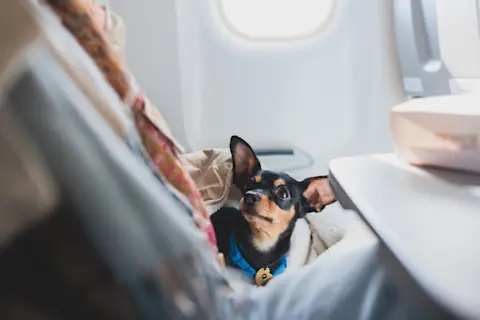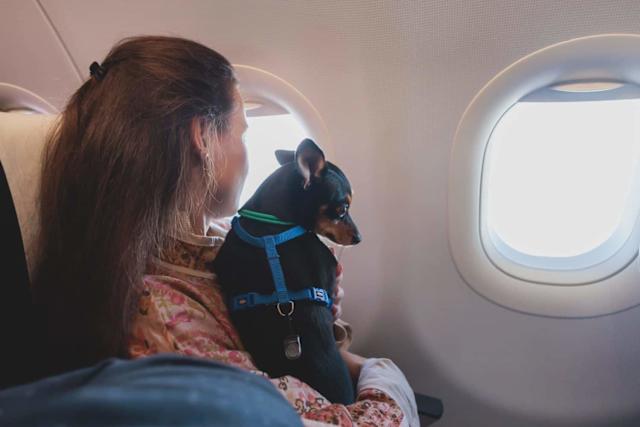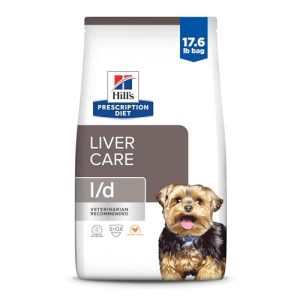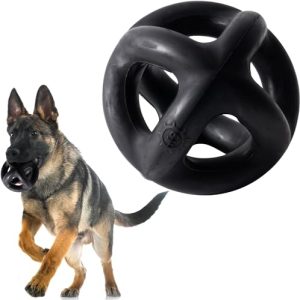Traveling with your dog on a plane can feel overwhelming. You want to keep your furry friend safe and comfortable, but there are so many rules and steps to follow.
What if your dog gets anxious? How do you prepare everything in time? This guide will walk you through exactly what you need to know. By the end, you’ll feel confident and ready to make flying with your dog a smooth, stress-free experience.
Let’s get started!
Preparing For Air Travel
Preparing your dog for air travel is a vital step for a smooth journey. This phase ensures comfort and safety for your pet during the flight. Proper preparation reduces stress for both you and your dog. Focus on key aspects like airline choice, flight booking, and understanding pet policies. These steps build a solid foundation for your travel plans.
Choosing The Right Airline
Not all airlines treat pets the same way. Some offer better services for animals than others. Look for airlines with good pet care reputations. Consider airlines that allow small dogs inside the cabin. Check for special pet programs or amenities. Selecting the right airline can make a big difference in your dog's travel experience.
Booking Pet-friendly Flights
Book flights that fit your dog’s needs and your schedule. Early morning or late evening flights tend to be cooler. Non-stop flights help avoid stress from layovers. Reserve your pet’s spot as early as possible. Airlines often limit the number of pets per flight. Confirm your booking directly with the airline to avoid surprises.
Understanding Airline Pet Policies
Every airline has its own rules for pet travel. Review policies on pet carriers, weight limits, and fees. Learn about health certificate requirements and vaccinations. Know the rules for pets traveling in the cabin or cargo. Follow these policies closely to prevent issues at the airport. Proper knowledge keeps your trip hassle-free.
Health And Safety Checks
Ensuring your dog’s health and safety before a flight is crucial for a smooth journey. Proper checks help prevent illness and stress during travel. These checks also meet airline and country rules. Preparing your dog’s health documents and identification reduces travel delays. Start planning these steps weeks before the flight to avoid last-minute issues.
Veterinary Visit And Vaccinations
Schedule a vet visit at least two weeks before travel. The vet checks your dog’s overall health and fitness for flying. Vaccinations must be up to date to protect your dog from diseases. Some airlines require specific vaccines like rabies. Ask your vet about recommended shots for your destination. Keep a record of all vaccines and treatments.
Health Certificates And Documentation
Most airlines require a health certificate issued within 10 days before travel. This certificate confirms your dog is healthy and fit to fly. It includes vaccination details and the vet’s signature. Check the airline’s rules for the exact form needed. Carry multiple copies of all health documents. Present them at check-in to avoid delays or denied boarding.
Pet Identification And Microchipping
Use a collar with an ID tag showing your contact details. Microchipping is a permanent way to identify your dog. Many countries require microchips for pet entry. Make sure the chip number matches your pet’s documents. Register your contact info with the microchip database. This helps recover your dog if lost during travel.
Packing Essentials For Your Dog
Packing for your dog’s flight isn’t just about convenience—it’s about safety and comfort too. Each item you bring can make a huge difference in how your dog experiences the journey. Think beyond the basics and prepare thoughtfully to keep your furry friend calm and happy.
Comfortable Carriers And Crates
Your dog’s carrier or crate is their little home in the sky. Choose one that’s well-ventilated, sturdy, and just the right size for your pet to stand, turn, and lie down comfortably. Soft-sided carriers offer flexibility but check airline restrictions carefully—sometimes hard crates are required for cargo travel.
Have you tested the carrier at home? Let your dog explore it before the trip to reduce anxiety. Adding a familiar blanket or bed inside can help your dog feel secure throughout the flight.
Food, Water, And Treats
Keep your dog hydrated and fed but avoid heavy meals right before the flight to prevent discomfort. Pack a collapsible water bowl and enough fresh water for the entire trip. Dry kibble is ideal for travel since it’s less messy and easier to portion out.
Treats are more than just snacks—they’re useful for rewarding calm behavior and distracting your dog during stressful moments. Choose small, easily digestible treats and bring a little extra in case of delays.
Toys And Comfort Items
Familiar toys can provide a sense of normalcy and comfort during the flight. Choose quiet toys that won’t disturb other passengers but will keep your dog engaged. Chew toys or puzzle feeders are great for mental stimulation and can reduce anxiety.
Think about your dog’s favorite item that smells like home—this can be a game changer in keeping them calm. Have you noticed your dog gravitating towards a particular blanket or toy? Don’t leave it behind.
Day Of Travel Tips
Traveling with your dog on a plane can be a smooth experience if you prepare well on the day of travel. Small actions can make a big difference in your pet’s comfort and stress levels. Here are essential tips to keep your dog calm and happy from start to finish.
Pre-flight Exercise And Feeding
Give your dog a good walk or play session before heading to the airport. This helps burn off excess energy and reduces anxiety. A tired dog is usually a calmer traveler.
Feed your dog a light meal a few hours before the flight. Avoid heavy food right before travel to prevent stomach upset. Keep fresh water handy to keep your dog hydrated but don’t overdo it.
Airport Arrival And Security
Arrive at the airport early to avoid rushing, which can stress both you and your dog. Use a secure, comfortable carrier approved by the airline for easy handling.
At security, you’ll need to take your dog out of the carrier. Use a leash and stay calm. Speak softly to reassure your dog, and move steadily through the screening area.
In-flight Care And Comfort
Place a familiar blanket or toy inside the carrier to provide comfort. This can help your dog feel more secure during the flight.
Check on your dog periodically if possible, and offer water during longer flights. Remember, your calm behavior influences your dog’s mood. How will you keep your dog relaxed when the cabin noise picks up?
Handling Common Challenges
Traveling with your dog on a plane comes with its own set of challenges. Handling these issues calmly can make the journey smoother for both of you. Let’s look at some practical ways to manage common concerns that arise during air travel with a furry companion.
Dealing With Anxiety And Stress
Dogs often feel nervous in unfamiliar environments, especially on planes. You can help by bringing a favorite blanket or toy to comfort them.
Try calming techniques like gentle petting or soothing talk before boarding. Some pet owners find that consulting a vet about mild sedatives or natural calming sprays can make a big difference.
Have you noticed how your dog reacts to new sounds? Playing recordings of airplane noises at home before the trip can prepare them for the real experience.
Managing Bathroom Breaks
Unlike car trips, planes don’t offer easy bathroom stops. Make sure your dog has plenty of opportunities to relieve themselves before the flight.
Bring absorbent pads for your dog’s crate or carrier to avoid messes. If you have a layover, use airport pet relief areas to give your dog a break.
Ask yourself: does your dog hold their bladder well? Knowing this helps you choose flights with shorter durations or better layover options.
Addressing Temperature And Cabin Pressure
Planes maintain pressure and temperature differently than on the ground, which can affect your dog’s comfort. Avoid heavy blankets that might cause overheating inside the carrier.
Check with the airline about their cabin temperature policies and whether pets can stay with you in the cabin or must go in cargo. Each option has different risks and comfort levels.
Keep an eye on your dog’s breathing and behavior during the flight. If you spot signs of distress, alert the flight attendants immediately.

Credit: www.discovermagazine.com
Arrival And Post-flight Care
After the plane lands, your dog’s comfort and safety remain a top priority. The journey isn’t over until your pet is calm, healthy, and ready to explore the new environment. Paying attention to how you help your dog exit and adjust can make all the difference in their travel experience.
Safe Exiting And Reacclimation
Getting your dog out of the airport safely is crucial. Keep your pet securely leashed or in a carrier until you reach a quiet spot. Crowded terminals and busy walkways can overwhelm them, so find a calm area to help your dog relax.
Let your dog take a few slow breaths and stretch gently. This moment helps reduce stress and signals that the journey is ending. Have a familiar blanket or toy handy to provide comfort and a sense of security.
Finding Pet Relief Areas
Airports usually have designated pet relief zones, but they can be tricky to locate without planning. Check airport maps ahead of time or ask staff for directions to these spots. Using these areas promptly helps prevent accidents and keeps your dog comfortable.
Bring waste bags and hand sanitizer to stay clean and courteous. If your dog is hesitant, try encouraging them with treats or gentle praise. Remember, these areas are designed for your pet’s needs—take advantage of them!
Monitoring Your Dog’s Health
After the flight, watch for signs of stress or illness. Symptoms like excessive panting, vomiting, or lethargy could indicate dehydration or anxiety. If you notice anything unusual, seek veterinary advice as soon as possible.
Keep your dog hydrated and offer small amounts of food once they seem ready. Avoid sudden activity; instead, let your pet rest and adjust at their own pace. How well you observe these details can greatly affect your dog’s recovery and happiness after travel.
Tips For International Travel
Traveling internationally with your dog requires more preparation than domestic flights. You need to understand the specific rules and paperwork for each country. These tips will help you navigate the process smoothly and keep your furry friend safe and comfortable.
Customs And Import Regulations
Each country has its own customs rules about bringing pets across borders. You’ll often need a health certificate issued by a vet within a certain timeframe before travel. Some countries require proof of vaccinations, like rabies shots, and microchip identification.
Check the official government websites of your destination to find the exact documents needed. Missing or incorrect paperwork can result in denied entry or quarantine. Have multiple copies of all documents ready, and keep digital backups on your phone for quick access.
Quarantine Requirements
Quarantine rules vary widely; some countries demand your dog stay isolated for days or weeks. This can be stressful for both you and your pet, so plan accordingly. Research whether your destination offers approved pet hotels or facilities where your dog can stay comfortably.
If quarantine is unavoidable, ask your vet how to prepare your dog mentally and physically. You might want to bring familiar toys or bedding to help reduce anxiety. Would you feel comfortable leaving your dog in quarantine, or is it better to choose a country with fewer restrictions?
Travel Insurance For Pets
International travel poses risks that pet insurance can help cover. Look for plans that include emergency vet care abroad and trip cancellations due to pet illness. Some insurance policies also cover the cost of quarantine or repatriation if your dog gets sick.
Before buying insurance, read the fine print carefully to understand what is included. It’s smart to have a safety net in case unexpected health issues arise during your trip. Have you checked if your current pet insurance covers international travel?

Credit: www.aol.com

Credit: www.aol.com
Frequently Asked Questions
What Are The Airline Rules For Flying With Dogs?
Airlines require dogs to have proper identification, health certificates, and approved carriers. Check each airline’s specific pet policies before booking. Some airlines allow small dogs in-cabin, while larger dogs must travel in cargo. Early reservations are recommended as pet spots are limited.
How To Prepare A Dog For Airplane Travel?
Acclimate your dog to the carrier weeks before travel. Ensure they are comfortable and calm inside it. Avoid feeding your dog right before the flight to prevent nausea. Bring familiar toys or blankets to reduce anxiety during the flight.
Can I Bring My Dog In The Airplane Cabin?
Most airlines allow small dogs in the cabin if the carrier fits under the seat. Check the airline’s size and weight limits for in-cabin pets. You must book your dog’s spot in advance and keep the dog in the carrier throughout the flight.
What Documents Are Needed To Fly With A Dog?
You typically need a recent health certificate from a vet, vaccination records, and identification tags. Some destinations require additional permits or quarantine forms. Always verify specific document requirements with your airline and destination country before traveling.
Conclusion
Traveling by plane with your dog can be smooth and safe. Plan ahead and check airline rules carefully. Pack your dog’s essentials like food, water, and toys. Keep your pet calm and comfortable during the flight. Remember to bring health documents and ID tags.
With good preparation, your trip will be stress-free. Enjoy the journey and make happy memories together. Safe travels for you and your furry friend!

Emily Barker is the founder of ChillDogLife.com, a space dedicated to helping pup parents discover the best dog products, lifestyle tips, and cozy ideas for happier homes.
A lifelong dog lover, Emily combines her passion for pets with a knack for research to share trusted recommendations on everything from toys and furniture to health and everyday care.
Her goal is simple: to make life easier, stylish, and more joyful for dogs and the people who love them.







